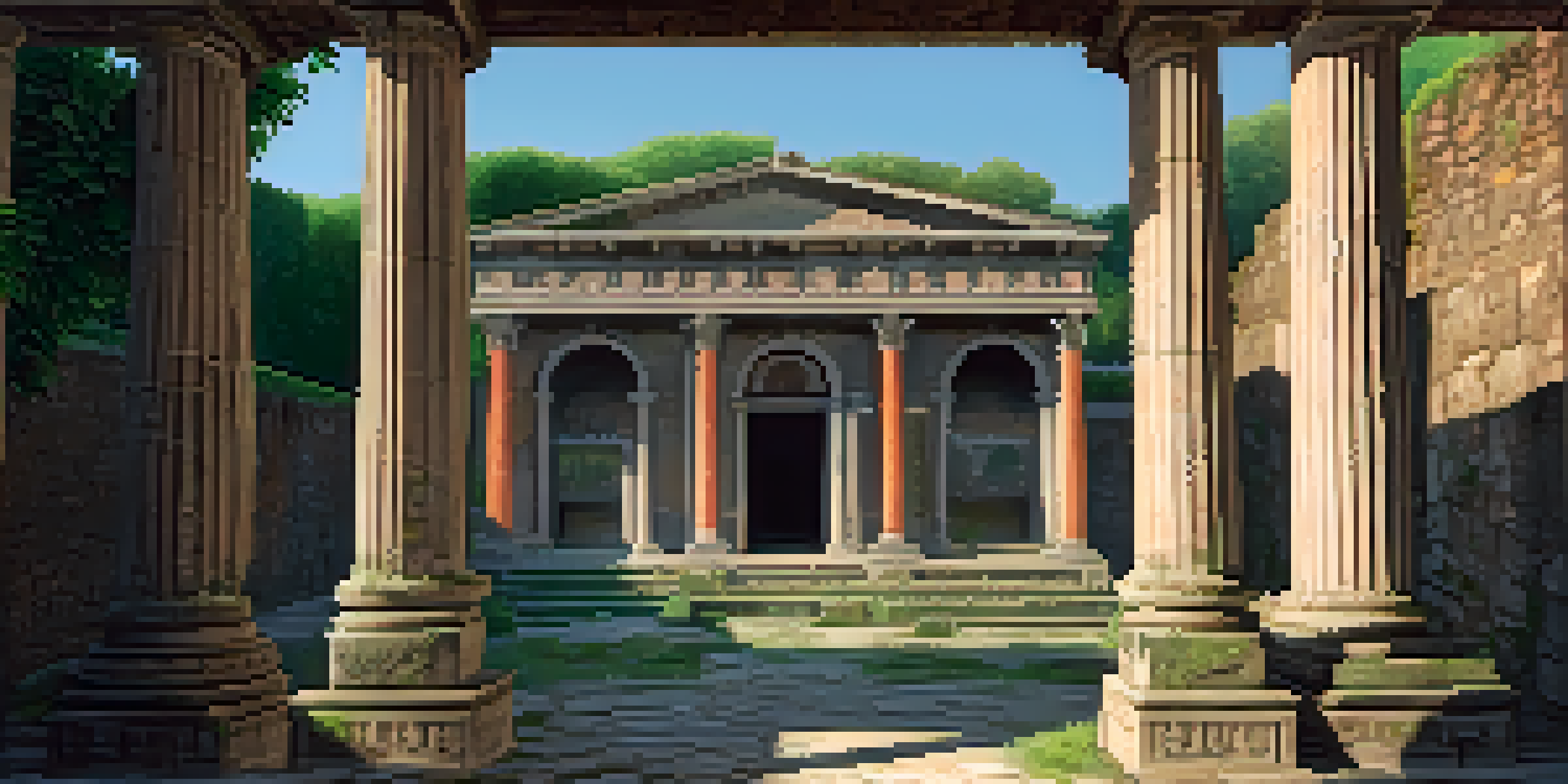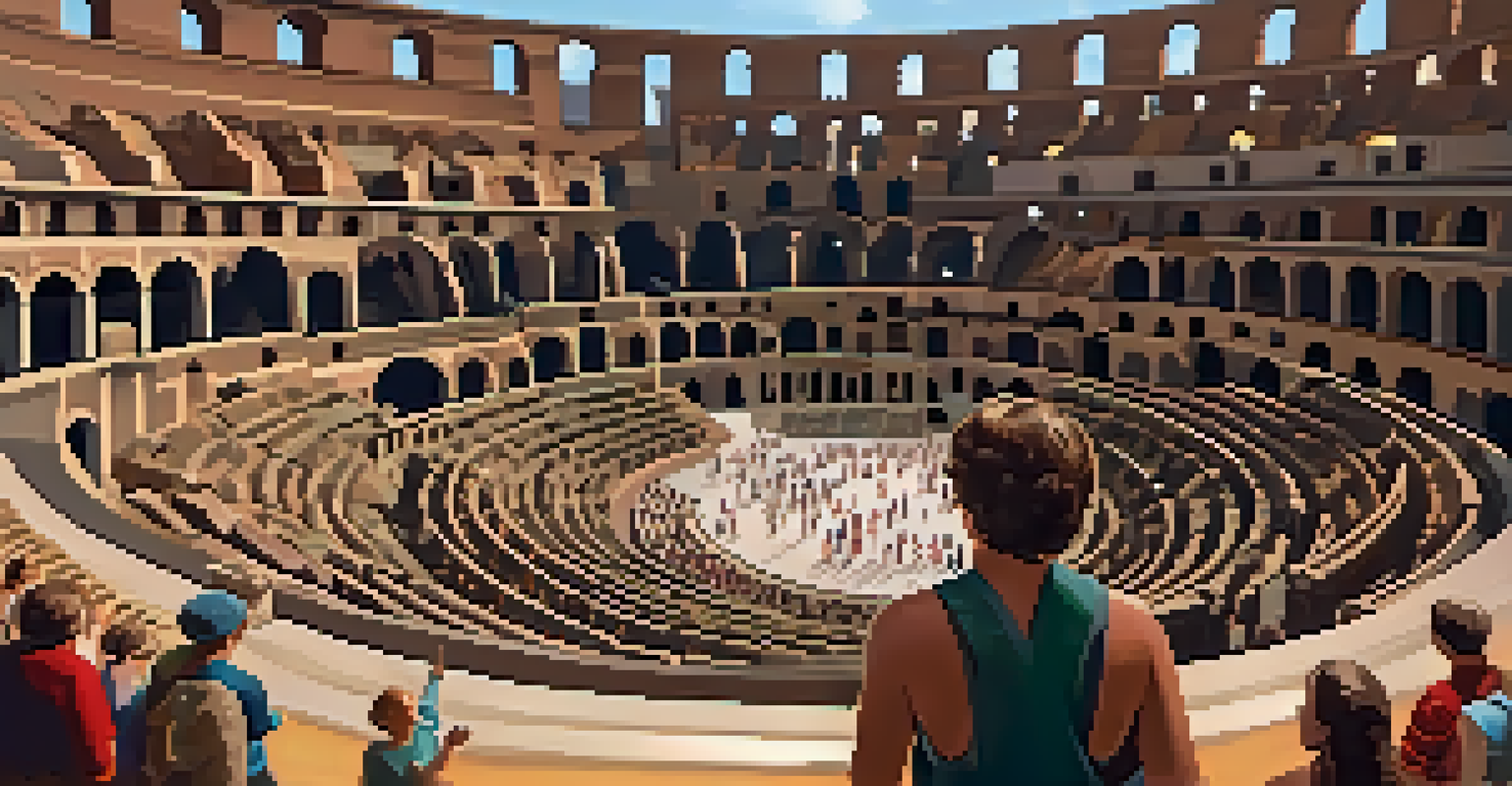Technological Innovations in Historical Site Preservation

The Role of 3D Scanning in Preservation Efforts
3D scanning has become a game changer in the field of historical preservation. By creating detailed digital models of sites, experts can capture intricate details that might be lost over time. This technology not only aids in restoration projects but also allows for virtual tours, making these sites accessible to a wider audience.
We do not inherit the earth from our ancestors; we borrow it from our children.
For instance, the ancient ruins of Pompeii have been extensively scanned, providing researchers with invaluable data to understand the site's history better. These digital models can be analyzed and manipulated, allowing historians and architects to experiment with potential restoration methods without physically altering the site.
Moreover, 3D scanning helps in documenting the current state of a site, creating a baseline for future preservation efforts. It ensures that as restoration progresses, the original features of the site are respected and preserved for generations to come.
Drones: A New Perspective on Site Inspection
Drones have taken site inspection to new heights—literally! These flying devices can survey large areas quickly, capturing high-resolution images from angles that ground inspections might miss. This bird's-eye view is particularly useful for monitoring the condition of hard-to-reach structures.

For example, the use of drones in monitoring the Great Wall of China has proved invaluable. They can identify areas that require immediate attention due to erosion or structural damage, allowing for timely interventions. This proactive approach ensures that preservation efforts are both efficient and effective.
3D Scanning for Digital Preservation
3D scanning captures intricate details of historical sites, aiding in restoration and enabling virtual tours.
Additionally, drones can capture data that can be integrated into Geographic Information Systems (GIS). This helps in creating detailed maps of historical sites, offering insights into their geographical context and aiding in strategic planning for preservation.
Augmented Reality: Enhancing Visitor Experience
Augmented reality (AR) is revolutionizing how visitors interact with historical sites. By overlaying digital information on the real world, AR allows guests to experience history in an immersive way. Imagine standing in front of an ancient castle and seeing a hologram of how it looked centuries ago!
Preservation is not a task for the faint of heart. It requires courage, wisdom, and a commitment to future generations.
This technology not only enhances the visitor experience but also educates them about the site's significance. For instance, the use of AR at the Roman Colosseum lets visitors witness reenactments of gladiatorial games, bringing history to life in a way that traditional tours simply can't match.
Moreover, AR can provide valuable context about the preservation efforts being undertaken. Visitors can see before-and-after images of restoration projects, fostering a deeper appreciation for the work involved in maintaining these historical treasures.
Artificial Intelligence in Restoration Planning
Artificial intelligence (AI) is making waves in the planning and execution of restoration projects. By analyzing vast amounts of data from previous restorations, AI algorithms can predict the outcomes of various techniques and materials, helping experts make informed decisions.
For example, AI has been used to analyze the structural integrity of historic buildings, predicting how they might respond to different environmental pressures. This knowledge is crucial for developing preservation strategies that ensure the longevity of these sites.
Drones Transform Site Inspections
Drones provide aerial views for efficient monitoring of hard-to-reach structures, enhancing preservation efforts.
Additionally, AI can assist in identifying the best methods for cleaning and restoring delicate materials, such as frescoes or stone carvings. By optimizing these processes, preservationists can maintain the authenticity of the site while ensuring it remains visually stunning.
Virtual Reality: A Tool for Education and Engagement
Virtual reality (VR) offers an immersive way to educate the public about historical sites. By creating virtual replicas, people can explore these locations without the constraints of time or geography. This technology is particularly beneficial for those who may never have the chance to visit in person.
For instance, VR experiences of the ancient city of Petra allow users to wander its streets and interact with its history. This not only captivates the audience but also raises awareness of the importance of preserving such sites for future generations.
Moreover, VR can be an effective tool for training preservation professionals. By simulating various restoration scenarios, trainees can gain hands-on experience in a risk-free environment, ensuring they are well-prepared for real-world challenges.
Blockchain Technology for Provenance Tracking
Blockchain technology is emerging as a powerful tool for tracking the provenance of artifacts and historical sites. This decentralized system creates an immutable record of ownership, ensuring transparency and authenticity in preservation efforts. It's particularly vital in combating art theft and illegal trafficking of cultural heritage.
For example, museums are beginning to use blockchain to document the history of their collections, providing visitors with detailed insights into the origins of each piece. This transparency not only builds trust but also enhances the educational value of exhibits.
AI Enhances Restoration Planning
Artificial intelligence analyzes data to inform restoration techniques, ensuring the longevity of historical sites.
Additionally, blockchain can facilitate funding for preservation projects by allowing donors to track how their contributions are being used. This accountability encourages more people to invest in preserving history, knowing their support is making a real impact.
Sustainable Technologies in Site Preservation
Sustainability is becoming a crucial consideration in historical site preservation. Innovative technologies, such as solar energy and sustainable materials, are being integrated into restoration projects to minimize environmental impact. This approach ensures that preservation efforts not only protect the past but also consider the future.
For instance, the use of eco-friendly materials in the restoration of historic buildings helps reduce the carbon footprint associated with construction. By prioritizing sustainable practices, preservationists can ensure that these sites remain viable for future generations.

Moreover, sustainable technologies can enhance visitor experiences. Green building practices can create comfortable, energy-efficient visitor centers that educate guests about both the site and the importance of sustainability in preservation.